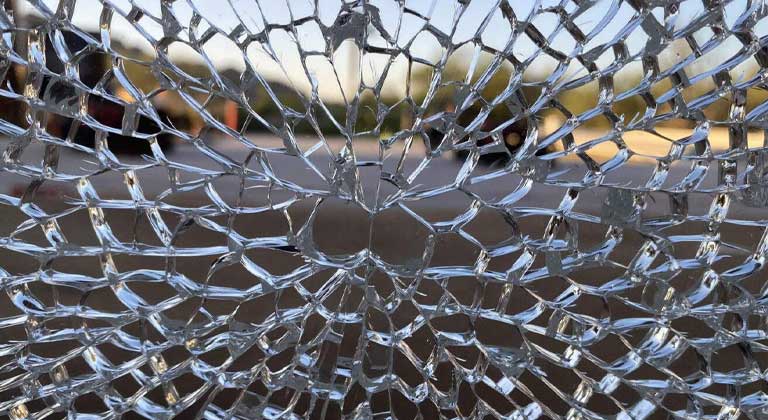As a rule, glass doesn’t break without any damage. When something hits the glass, and it breaks the cause is easy to determine. What if it seems that the glass breaks on its own? What can cause something like this?
Each basic glass contains extremely low quantities of nickel sulfide (NiS) crystals, which are inevitably introduced into the glass via the raw materials. In normal annealed float or patterned glass, these crystals do not have any relevance.
In tempered glass, the fast cooling process of the tempering “freezes” the NiS particle in a high temperature crystal form. When this particle is later affected by temperature from energy absorption, the crystal structure may change because the volume of the crystal changes. If the increase is too big it causes the glass to burst. Unfortunately this kind of breakage is not included in any warranty because its an inevitable part of glass manufacturing that is not possible to eliminate completely.
NiS breakage
If we don’t see the glass bursting ourselves then it might be difficult to know if the glass has been broken by an external source or not. When shattering the NiS particle caused breakage is on occasion possible to determine from a “butterfly” shaped pattern. The breakage point is in the centerline of the point where the NiS particle has expanded. If this kind of pattern is visible on the breakage then it’s a great chance that NiS particle has shattered the glass.

To minimize the risk of NiS particle breakage a process called Heat Soak Test is recommended. Heat soak testing is a destructive test. Tempered glass is put into a heat soak oven and brought to and held at a temperature of 290degrees Celsius for approximately two hours. Most glass containing NiS will shatter during this process and those be eliminated from the glass project. This causes glass containing NiS inclusions to break in the heat soak chamber, thus reducing the risk of potential field breakage. Close to 99% glass panes with inclusions will be identified and suffer fracture.
The Popularity of Heat Soak Test
In some markets, like the UK, HST process is almost a must in bigger projects. In Scandinavia and Baltics it still depends a lot on the developers and builders interest. Unfortunately also the financial situation of the project. While it may be an increase of cost on the IGU then the replacement of one after the spontaneous NiS breakage. It might be much worse if this happens in a high traffic area and the broken IGU is located on the 20th floor of a major skyscraper.
Glassense has modern Heat Soak Test ovens in three of our factories and we test about 3000m2 of glass a year. The process is getting more popular in highrise buildings meaning the demand for it grows. Still there is a long way to go to say we test every glass in the market. We recommend the inclusion of HST where there is risk that the breakage may fall and harm someone below. Or the exchange of the glass after the opening of the building is too expensive compared to the IGU cost for the re-make.


Ask about the Heat Soak Test process from our sales managers and we are happy to talk about it any of our projects.

